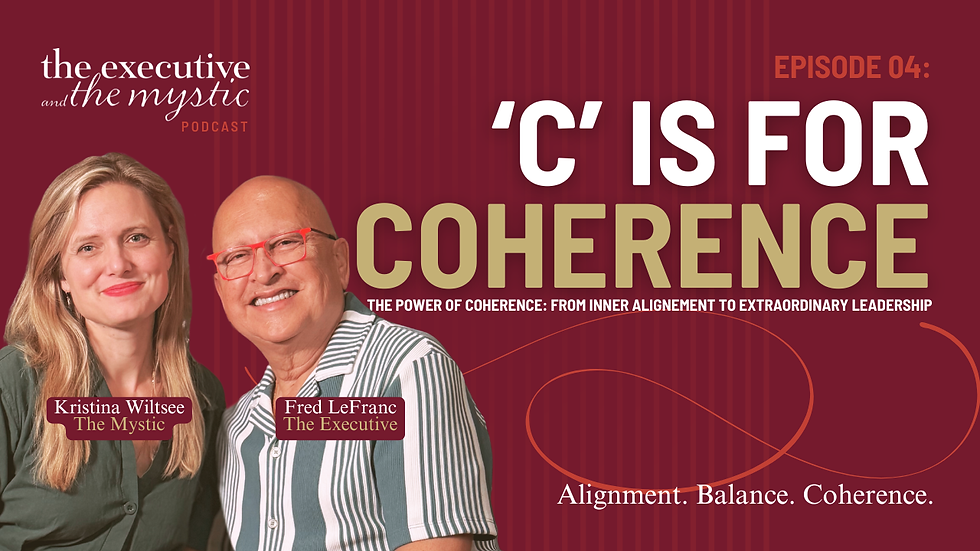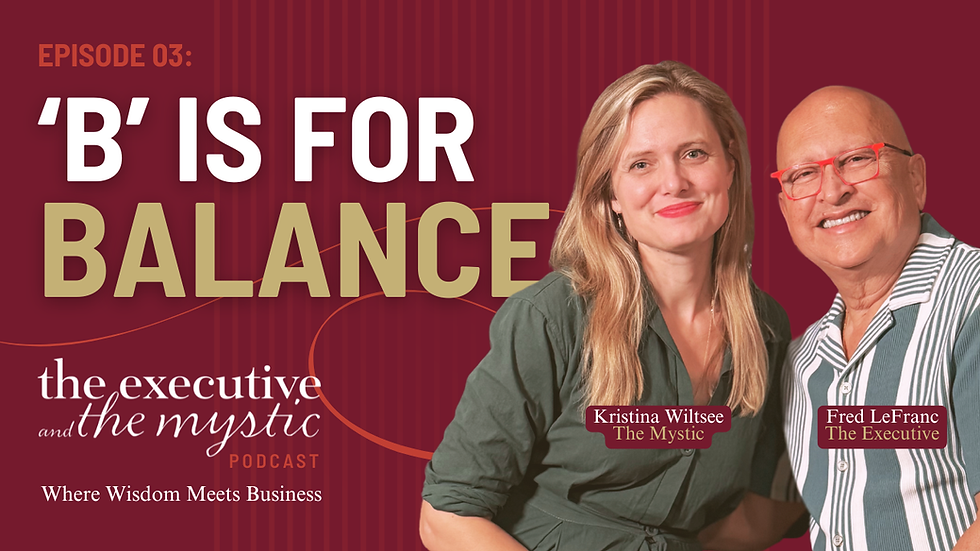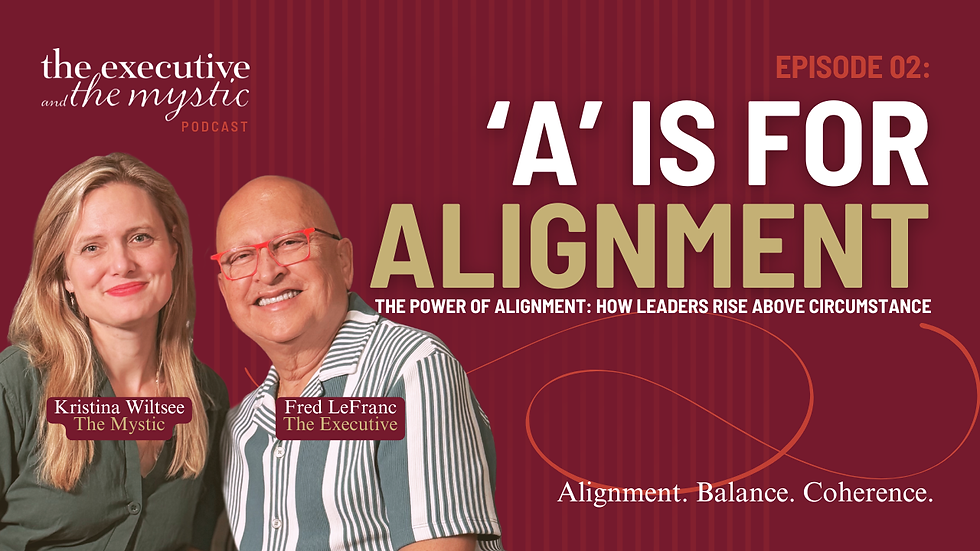Episode 1: The ABCs of Conscious Leadership: Alignment, Balance, and Coherence
- Kristina Wiltsee
- Apr 4
- 4 min read
Updated: Nov 8
Introduction: A Journey Toward Conscious Leadership
Leadership is more than strategy, execution, and profitability. True leadership is about alignment—with purpose and values; balance—between competing forces; and coherence—within oneself and with the world.
In our new podcast, we (Fred LeFranc and Kristina Wiltsee) explore these essential elements of conscious leadership. Drawing from Fred’s experience as a hospitality consultant and Kristina’s expertise as a Life Alchemist, we offer insights into how leaders can evolve—not just professionally but personally—to create meaningful, sustainable success.
This post serves as an introduction to our approach, breaking down the key themes of alignment, balance, and coherence—what we call the ABCs of Conscious Leadership.
Alignment: Building a Solid Foundation
“There are natural laws that govern the universe. When we align with them, leadership becomes more effective.” – Fred
Alignment is about working with the current rather than pushing against it. It means leading in a way that resonates with universal principles, rather than reacting to external pressures.
One of the most transformative realizations in Fred’s journey was understanding that the universe is neutral—situations are neither inherently good nor bad. As Shakespeare wrote in Hamlet, “Nothing is either good or bad, but thinking makes it so.” Events happen, but our perception shapes their impact.
Leaders often operate under inherited principles—strategies passed down from mentors, parents, or industry norms. Some of these are solid, while others are rooted in fear or outdated thinking. For example:
• A leader might believe vendors should never be trusted, based on a past negative experience.
• Another might take the opposite stance, overcompensating by always prioritizing vendor relationships.
Both mindsets are reactions to past pain rather than a true alignment with lasting, universal principles. The key is to step back and evaluate which beliefs are foundational versus reactionary—and then align decisions accordingly.
Balance: Navigating the Paradoxes of Leadership
“In leadership, you’re always balancing paradoxes: quality vs. cost, work vs. life, service vs. efficiency.” – Fred
The reality of leadership is that it’s full of competing demands. Leaders constantly juggle opposing forces—profit vs. purpose, short-term needs vs. long-term vision, individual well-being vs. organizational success.
A common misconception is that balance is about achieving a perfect middle ground. In reality, balance is dynamic. It requires the ability to shift, adjust, and remain agile.
• In business, focusing only on service can lead to unsustainable labor costs.
• In personal life, focusing only on work can lead to burnout.
• Swinging too far in either direction creates instability.
Great leaders recognize that balance is a pendulum, not a fixed state. There are times when one aspect of life or business requires more attention. The key is to maintain awareness and adjust accordingly, rather than being pulled unconsciously by external forces.
As former PepsiCo CEO Indra Nooyi put it, “There is no such thing as work-life balance—you will always be out of balance for a period of time. The key is knowing when to shift.”
Coherence: Becoming the Right Decision-Maker
“Coherence is about who you are when making a decision. Are you acting from fear, or from a place of clarity?” – Kristina
While alignment and balance focus on external structures, coherence is deeply personal. It’s about self-regulation, emotional intelligence, and decision-making from a grounded place.
When leaders operate from stress or fear, their decision-making shifts into survival mode—reactive, impulsive, and often damaging. This happens because the brain’s stress response (the amygdala) takes over, overriding logical and strategic thinking.
Instead of responding wisely, leaders in stress mode:
• Micromanage out of fear of losing control.
• React aggressively to perceived threats.
• Overcompensate, making extreme shifts in policy or culture.
The key to coherence is developing the ability to regulate emotions, maintain perspective, and make decisions from a centered place.
A simple way to experience this concept? Try brushing your teeth with the opposite hand. It feels awkward at first, but with time, your brain adapts. The same applies to emotional regulation—at first, it’s uncomfortable, but over time, leaders can learn to pause, step back, and choose their responses rather than reacting impulsively.
The Connection Between Coherence and Leadership
A company’s culture is a reflection of its leader’s personality.
• A leader prone to fear-based decision-making will create a culture of stress and uncertainty.
• A leader who embodies coherence will foster an environment of stability and trust.
Leadership is not just about making the right business choices—it’s about being the right person to make those choices.
Moving Forward: The Journey of Conscious Leadership
Our goal with this podcast (and our work) is to support leaders in their journey of self-awareness and growth. The ABCs of Leadership—Alignment, Balance, and Coherence—are essential tools for navigating the complexities of leadership and life.
The reality is: Pain is inevitable, but suffering is optional.
• Pain happens—it’s part of business, life, and growth.
• Suffering, however, is a choice—it occurs when we hold on to pain instead of learning from it.
By developing alignment, balance, and coherence, leaders can reduce suffering, make better decisions, and create cultures that thrive.
We’ll be diving deeper into these concepts in future episodes—sharing real-life experiences, practical tools, and guest insights from those on this journey.
Stay tuned, and let’s explore this path together.
Interested in learning more? Follow our podcast and join the conversation on conscious leadership.




Comments